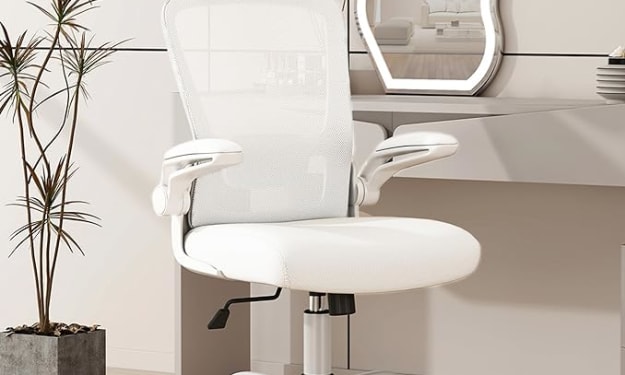How To Connect One Monitor To Multiple PCs
Just imagine a programmer working on a project where the code is being compiled on two or more devices and it is necessary to see the screen of each in order to timely respond to the dropped message or simply monitor the state of the process.
As practice shows, one monitor is no longer enough for the average user. And it’s not just about gamers. Most often, the demand for the second (third, fourth) screen arises among layout designers, constructors, designers, editors, and other specialists. Working with one screen is only comfortable for a schoolchild or a sales manager, because switching between windows takes a very long time and, therefore, is counterproductive. So the second video card is installed on the PC in order to finally bring the browser and Internet communicators to different screens.
But today we will talk about a situation where you need to connect one monitor to several computers. Which, by the way, is not uncommon, although it is more often in demand in the industrial sphere. For example, if it is necessary to simultaneously control several CNC engravers (simply CNC machines), or several servers in a rack, or a mining farm. And also when monitoring multiple HDMI signal sources (TV broadcasting, streaming, video surveillance).
Surely many of you have seen how in video surveillance systems the image from several cameras (from 2 to 24) is displayed on one monitor. Such solutions were known back in the era of analog video surveillance and were built on the basis of the so-called quadrature. Let’s start with it, although the analog scenarios themselves are no longer interesting to us.
Quadratus.
These devices got this name because they divided the screen area into four, and sometimes more square windows. They were performed both as separate modules and as part of video servers: analog cameras were connected to their own inputs, and a monitor was connected to a single video output. Composite, AV, VGA, D-Sub, or HDMI is not that important.
It is important that they output mosaics from the video signals and allow you to control these windows. Various modes were supported: “frame in frame”, “master-slave”, “kaleidoscope”, “zoom”, “switching to the main one” — the operator himself chose what he wanted to see.
Why is this excursion? And to the fact that now on sale it is easy to find HDMI-quadrotors that allow you to broadcast a video signal from several sources to one screen and switch between them using the buttons on the device panel.
For cases when you only need to look at what is happening, and controlled sources are within a radius of 10 meters from the operator, nothing better can be imagined. For example, LENKENG LKV401MS worth 8,499 rubles is designed to work with four video inputs and is equipped with remote control.
There are many spheres of application. So, in production, the operator can control the operation of four CNC machines, and at-home use the device for complex streaming. The only drawback is that you can only watch, and it will not work remotely to interfere with the work of the controlled source. To solve such a problem, you will need another gadget — a KVM switch.
KVM switch, or switch.
The name was formed from the first letters of the attributes of a typical peripheral of any computer: K — keyboard (keyboard), B — video (video), M — mouse (mouse). It is a rare case when abbreviations in two languages sound the same, although they differ in spelling. The essence is the same: one monitor, one keyboard, and one mouse (sometimes also a USB input and an audio connector) are connected to the device, and it, in turn, is connected to each controlled computer with “hydra” cables. Or a server — IT departments are well aware of the existence of this class of devices, especially where several servers have to be serviced.
Anticipating the obvious question, I answer: yes, there are IP solutions that can broadcast signals over the Internet, so that access to a group of computers and other nodes can be organized at any distance. Some of the best-known KVM switch manufacturers include ATEN, which has a wide range of KVM devices in its portfolio, from the miniature 2-port cable switch with a CS22H remote switch (convenient for the home) to the most sophisticated industrial-grade cascading solutions that allow remote access to multiple devices. thousands of computers with one monitor.
Multi-input “TV”
“Why do I need a KVM if my wireless keyboard and mouse are already connected to all my PCs? I would have a monitor! “ It would seem that the answer to this question lies in the first part of our review. But there is another option — to purchase a multiport monitor with a universal set of input ports and a set of smart functions such as ‘split screen’ and ‘frame-in-frame’. Such models can often be found in TVs, but if you try hard, then they are not uncommon among ordinary office monitors.
For example, LG 34UM95: two HDMI, DisplayPort, and two Thunderbolt ports (for connecting to a Mac Pro) plus Dual Link-Up, which allows you to simultaneously view images from two signal sources.
You can easily connect two computers, and TVs have HDMI, DisplayPort, and VGA-DVI-S Video … Accordingly, you can connect exactly as many sources how many inputs there are, and then everything depends on the built-in software of the TV receiver-monitor. Both eminent vendors and little-known Chinese manufacturers have such displays, if you wish, you can even find solutions with multiple HDMI ports and a built-in quadrature.
Programs, programs …
And, of course, software solutions, without which nowhere. Several windows of AnyDesk or TeamViewer will allow you to observe on one monitor exactly as many desktop images (of course, we are talking only about computers, connecting a TV tuner will not work that way), as the PC-hub hardware and the bandwidth of the local network can handle.
Yes, to implement the scheme, you will need not only a monitor but also a computer. However, for this purpose, no special power is needed, a nettop or candy bar with an “office” filling is quite suitable.
Of course, no difficulties in connection are expected: we launch the client part on the managed computers, and the server part on the controlling one, connect and work. Accordingly, other means of remote connection are suitable for such a system: RDP, for example, or terminal. By the way, the latter provides the ability to connect not only to computers but also to network equipment and other devices that have a web interface.
Conclusions.
The listed methods of connecting one monitor to several video signal sources are the most common and simple ones, but they are far from the only ones. As a receiver, you can use multi-port video capture devices (both hardware and software), streaming solutions, video processing tools, media converters, etc. It is up to you to decide which one is the best for you, being guided by the situation and the material base.
After all, even with the most archaic video surveillance system, you can organize the transmission of images if you place the cameras in front of the monitored displays. By the way, it doesn’t matter what they are: they can even be just informational, indicator-digital.
About the Creator
Michail Bukin
Creative Writing Expert and Ambitious Stutterer
Enjoyed the story? Support the Creator.
Subscribe for free to receive all their stories in your feed. You could also pledge your support or give them a one-off tip, letting them know you appreciate their work.







Comments
There are no comments for this story
Be the first to respond and start the conversation.